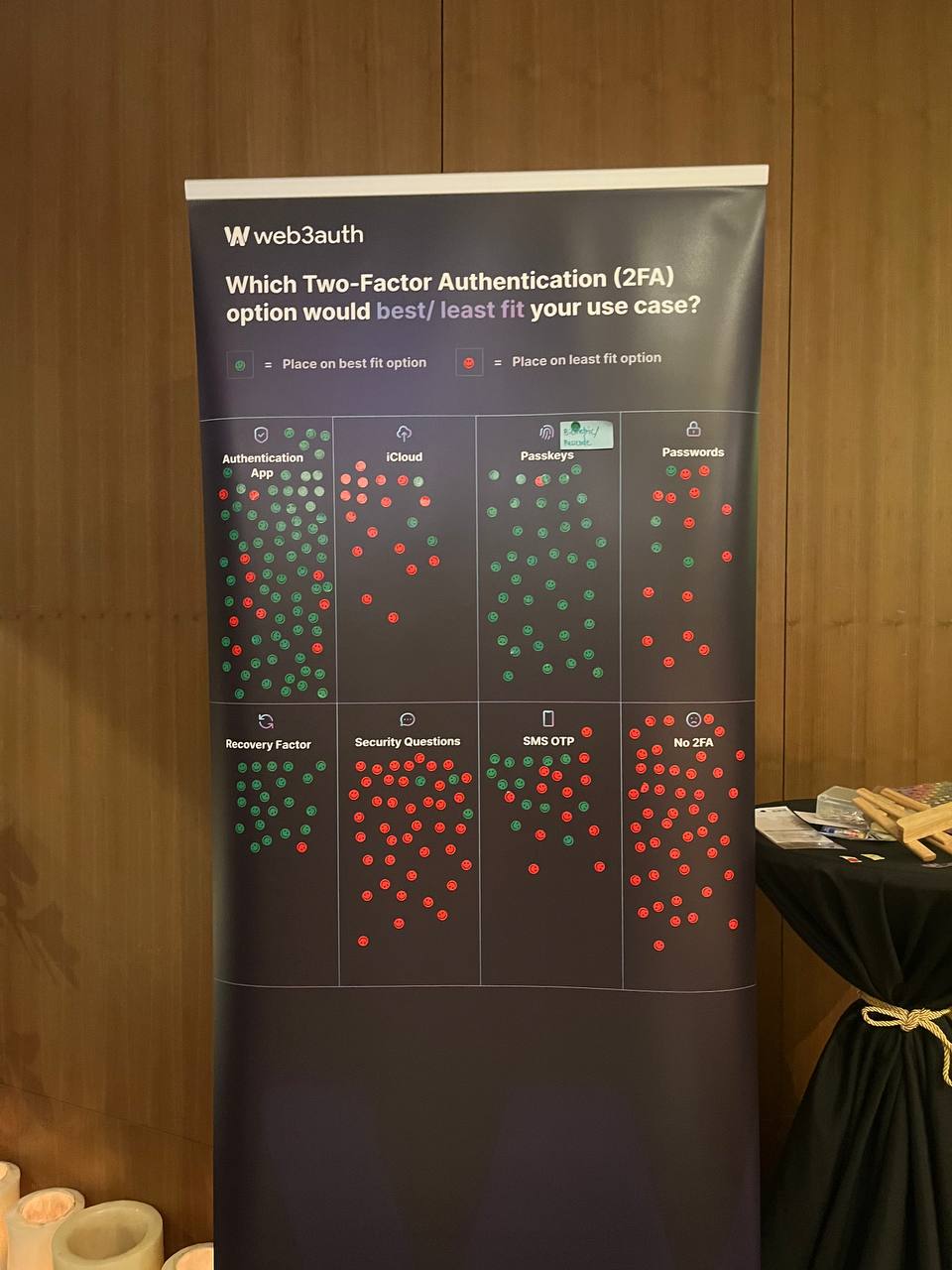Web3 has relied mainly on seed phrases for a long time despite its poor user experience and the magnitude of security risks associated with them. They could be extremely complex for new users who have just entered the space.
Two-Factor Authentication (2FA) acts as an effective alternative solution to seed phrases, with better user experience and ease of access. The objective of this research was to understand what the industry preferred when it came to their preferred choice of 2FA methods.
I have led this research where I worked on the research plan and execution, also liaised with fellow designers, Business and Marketing throughout and during the Web3 tech conference Token 2049 and the company's side-event Wallets & UX Unconference.
Crafting the Research Plan
The first step to building a successful user research is definitely to understand the goals that the team is trying to drive towards. I often find this step takes the 30% of the time as goals changes unexpectedly and alignments often take a while to get. In this research, I spent some time to find out from the stakeholders on why we are doing it at the initial meetings and I have concluded them below:
Appropriate Use of Research Method
Quantitative research (dot-voting) with in-person interviews was chosen as the suitable method as I find that

Participants are asked to vote for the best/least fit 2FA methods to their use cases. Red dot being the least fit while green dot being the best fit.
Navigating around Limitations
The initial idea of the quantitive research was to carry out with users interacting with screens to cast a vote. In this way they will be able to view the live results of all votes after each entry before the result will be hidden again. However I realised that in large scale of event, network connect will be poor, also we will have to move display screens to the conference hall itself within tight timeline. Hence, I decided to do dot-voting on the pull-up banner. This greatly reduced the manpower needed for setup on actual day. Furthermore, it did not affect the amount of engagement we get with participants.
Having dot-voting will give us quantitative results but to dive deeper in understanding these users' preferences, additional questions need to be asked. Therefore I prepared a few in-person questions to reach out to those participants who are willing to explain more on their choices.
What are the authentication methods that you have used in your application?
How do you decide on which authentication methods work best for your application?
What are some of the reasons why you are hesitant on using passkeys so far?
I was quite worried beforehand that participants might be unwilling or too introvert to share more, however, reality proves that most of Web3 community are very open to generously share their thoughts. Thankfully, we note down on the spot on many insightful thoughts and summarised these along with the voting results.
It was remarkable that we collected great number of votes - 478! This results were counted manually and planned to present in graphics for easy digestion of the information on Web3Auth's social platform.
After sharing with the internal team on the results, we also realised that sharing merely the numbers is definitely like touching the tip of an iceberg. It will be more valuable to get the research report done up in an article and share with the Web3 community too. This let everyone knows what the industry preferences are, we could then work towards improving user experience together

💾 Importance of Research Repository
At the end of the research, I documented the information on Dovetail, where team members could also have access to the collected insights in future. I view this particularly essential for any company who values UX research. This ensures that there will be better-informed decisions among stakeholders, reduce possible redundant research work and improve our research maturity as a whole within the company.
✨ Good Communication Skills is Essential
It is with smooth conversations that makes participants feel ease at interviews. I found out that having good communication skills allow the prompting of questions easily and get participants to talk and share more. This helps greatly with the collection of user insights, giving some real interesting and unexpected responses.